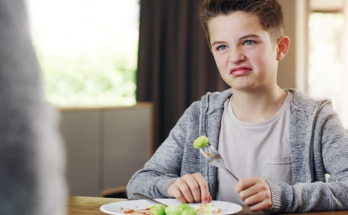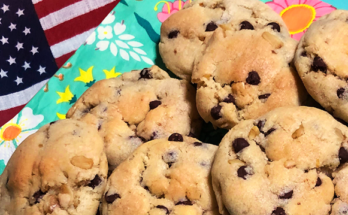

Despite what my family might lack in material wealth, we consider ourselves profoundly lucky that our family matriarch — my 97-year-old grandmother, Florence Genevieve “Genny” Tally — is still alive and healthy today. She was my parent figure and legal guardian through much of my early life, and it is truly a blessing that my young sons get to know her up close and personal. It is wonderful for children to have such a close living link to history; it puts the scale of human events into a relatable time frame in a very concrete way.
From 1950 to late 2019, my grandmother lived in the same house in my small rural hometown on the Kansas side of the Oklahoma border. Her daughter — my mother Jeanetta — lived with her there for most of that last decade or so, but the younger woman’s health became more and more precarious, eventually prompting her move to a permanent full-time nursing facility. Grandma Genny, still quite robust but increasingly reliant on the use of a walker to get around, finally decided she would be better off in an assisted living community, and ended up taking an apartment in the same facility where my mother was in nursing care.
In the process of moving her out of her longtime home, we had to divide all my grandmother’s things into categories: things she would take with her, things to be given away to friends or family, things to be discarded, things to be donated, things to be sold — and things I would take home with me as de facto caretaker of family heirlooms, photographs and legal mumbo jumbo. I was hesitant to drag too much back to my own house, as I already suffer from a surfeit of clutter, and many of the items she suggested I take were things I already had and didn’t need two of.
That being said, there were definitely a few specific objects I wanted. I took her vintage Domestic sewing machine in its wooden cabinet; she used that bulletproof old beast to sew most of the clothes she still wears today, as well as the bathrobe I have worn daily for 30+ years now (and many rad ’70s outfits for me in my youth, too). I took the old glass hurricane lamp that had belonged to her grandmother; she has told me many times of her memory of doing her multiplication tables to its light as a child, circa 1930. I took my wooden toybox, made for me by her brother, my late great uncle Clyde Wyant; Grandma Genny had been using it to store canned goods in the years since I had grown up and left home.
But more than anything, I wanted my grandmother’s cookbook and the accompanying recipe box.
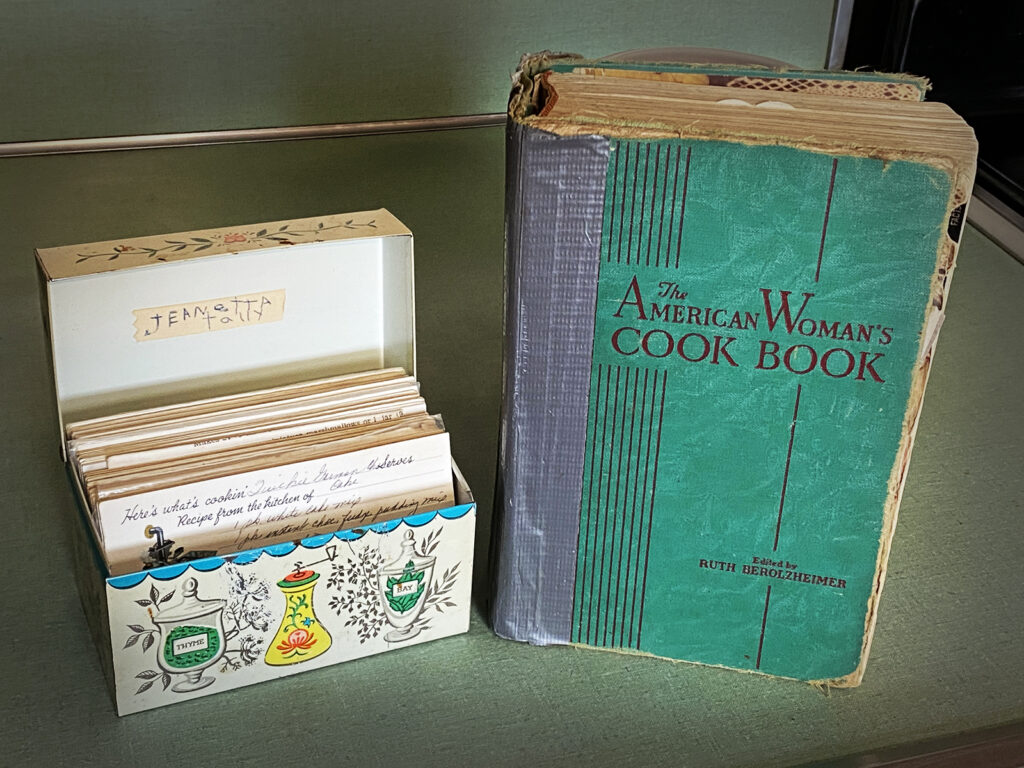
My grandmother was born in Newkirk, Oklahoma in 1923, the first of eight children born to Santa Fe clerk John Wyant and his wife Lillie. She would also be the first to marry, sneaking off with her boyfriend Troy Tally shortly before her 16th birthday to get secretly hitched without telling her family. When her dad heard the news in town that she had “run off and married that Tally boy,” he flipped. “What are you going to live on?” he demanded. “Possum!?”
But it worked out for the old man to have Troy on hand to help him with chores around the house and his modest backyard farm, and eventually John even managed to help the younger man land a hard-to-get job on the railroad.
Somewhere around this time, somebody handed Genny, still a teen, a copy of The American Woman’s Cook Book, which at the time was a brand-new, quite modern publication, edited by Ruth Berolzheimer of the prestigious Culinary Arts Institute in Chicago. It of course includes a panoply of recipes across all categories of food: fish, meat, poultry and game, egg dishes, vegetarian(!) dishes, salads, salad dressings, cakes, candies, custards, cookies, pickles and relishes, on and on, etc. But more than that it contains chapters on food buying, nutrition, meal planning, formal table setting, cooking for two, canning, “food for invalids,” wine, dinner and cocktail parties, herbs and spices and other areas of food-related interest to the young American housewife circa 1940.
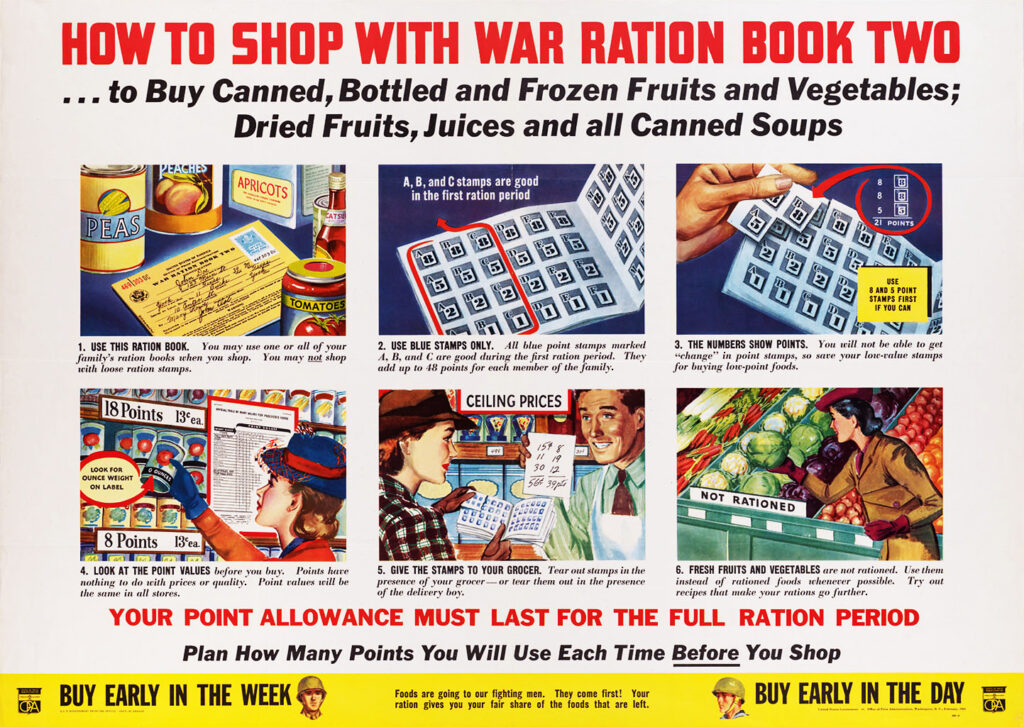
Over the years my grandmother started writing down outside recipes in the extra blank pages at the end of the book. There is no telling where she got these; some she most likely saw in the newspaper or a magazine, others were perhaps dictated to her by friends or family. Most are written in pencil that has faded over time so that close scrutiny is required to read her elegant, archaic penmanship. The first such handwitten entry that appears is for Southern Spicy Gingerbread, which sounds pretty good, though I don’t recall her ever making it. Next is an entree called Texas Hash, which appears to be a ground beef-laden riff on Spanish Rice. Peanut Butter Cookies, Cornbread, Pineapple Upside-Down Cake, Rolls, something called “Glorified Rice,” Chocolate Cake, Punch made with pineapple juice, lime sherbet and ginger ale, page after page of food spanning the 1940s, ’50s, ’60s, ’70s — until the end of the blank pages.
From my earliest memories in the ’70s until the day we moved Grandma Genny out of her house, this cookbook lived in the third drawer down in her kitchen, directly below the dish drainer. And always right next to it in the drawer was a little steel recipe box, just exactly the size to accommodate standard three-by-five recipe/note cards. My mother’s name is inside the lid, but I do not recall it ever being outside of my grandmother’s house, so I can only assume it belonged to my mom in her adolescence, as she had married my dad and was out of the house by age 16.

Inside the box are 84 cards with recipes written on them in many different hands (including my own), some even neatly typed. There are also a number of newspaper clippings and handwritten recipes, and about a dozen blank note cards for future additions, as well.
I consulted these twin culinary oracles — the book and the box — many times as a teen interested in learning how to cook, and my grandmother was always handy with advice on how to tweak various recipes — shortcuts, substitutions, adjustments to the time or temperature at which something should be baked, and so on. I learned a lot and enjoyed being able to create delicious dishes, for my own enjoyment and to share, too. I have always equated cooking for others with showing love for them, taking care of them — and it has always given me great pleasure to do so.
In 1988 I moved away to college and on the day Grandma Genny drove me to my new home in the dormitory in Wichita, she sent along with me about six dozen of her Cowboy Cookies, which she had baked the night before. I went down the halls in the dorm knocking on doors, introducing myself to the other noobs and handing out my grandma’s cookies — which turned out to be a remarkably fun way to meet (and make a good impression on) lots of new people. The first time I returned home to visit, just a couple weeks later, she sent back with me several large coffee cans full of her insanely delicious homemade caramel corn. Even from a distance, she was sustaining me with her love (and a lot of sugar).
Fast-forward to just the other day. Browsing through Grandma Genny’s old green cookbook, its wrecked binding now reinforced with grey duct tape, I was squinting hard at the manual entries in the back when I came across the legendary Cowboy Cookies recipe.
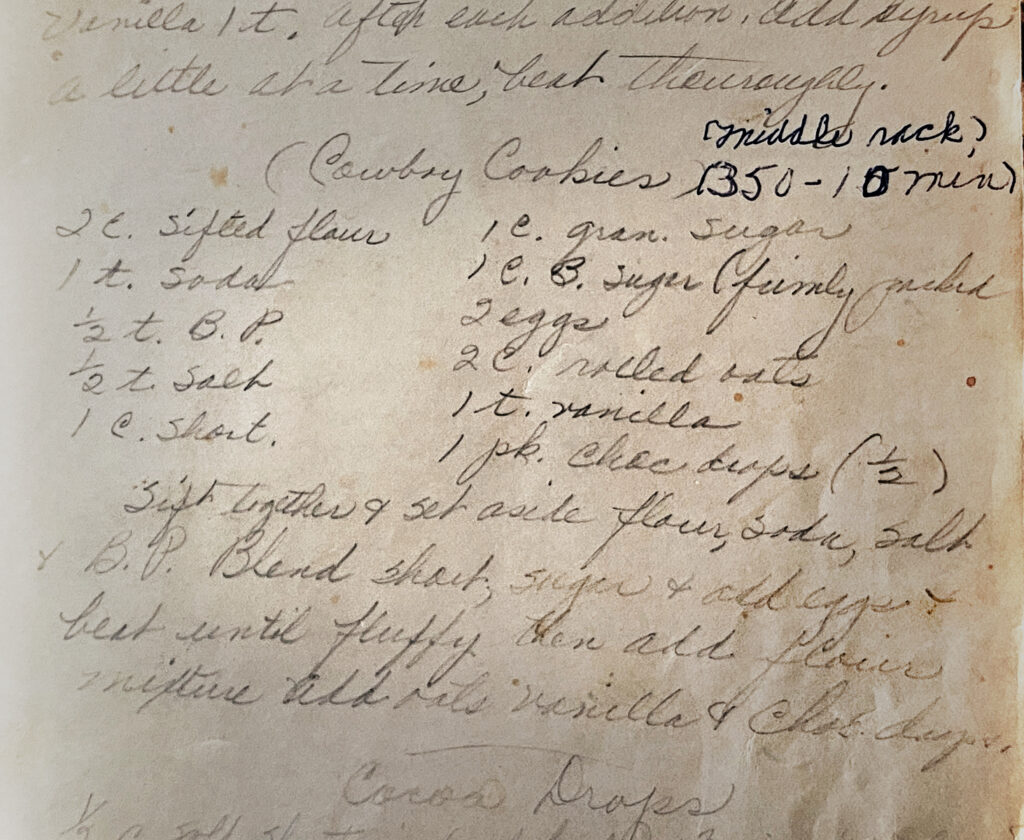
I knew right then that my boys and I had to whip up a batch of these classics. Nash (9) and Moses (6) are always game to help in the kitchen, and they were both a big help, as you can see in the photos below.
Moses was very keen to try using the old-fashioned sifter and was surprised when I told him it was probably made before World War II. We always use the wonderful Hudson Cream flour, just the best stuff out there; if you can get it in your area, please try it. I know you will be pleased! (This is not paid placement, I just love their product!) Moses also got to operate the stand mixer for the first time and after I gave him the safety lecture, he took his work very seriously — and for that he certainly earned a lick of the beater.
After the dough was ready, Nash helped me roll it into balls and then place them on the cookie sheets. (We used a kitchen scale for precision but you don’t have to! Just try to make your dough balls roughly the same size.) After ten minutes in the oven, we had a big batch of perfect cookies!

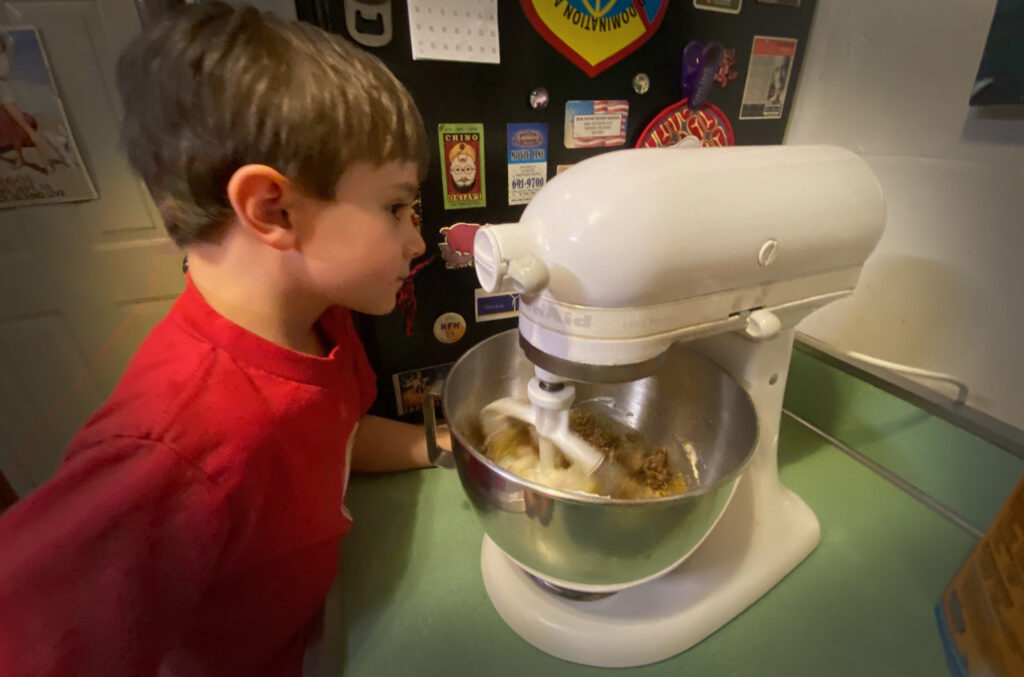

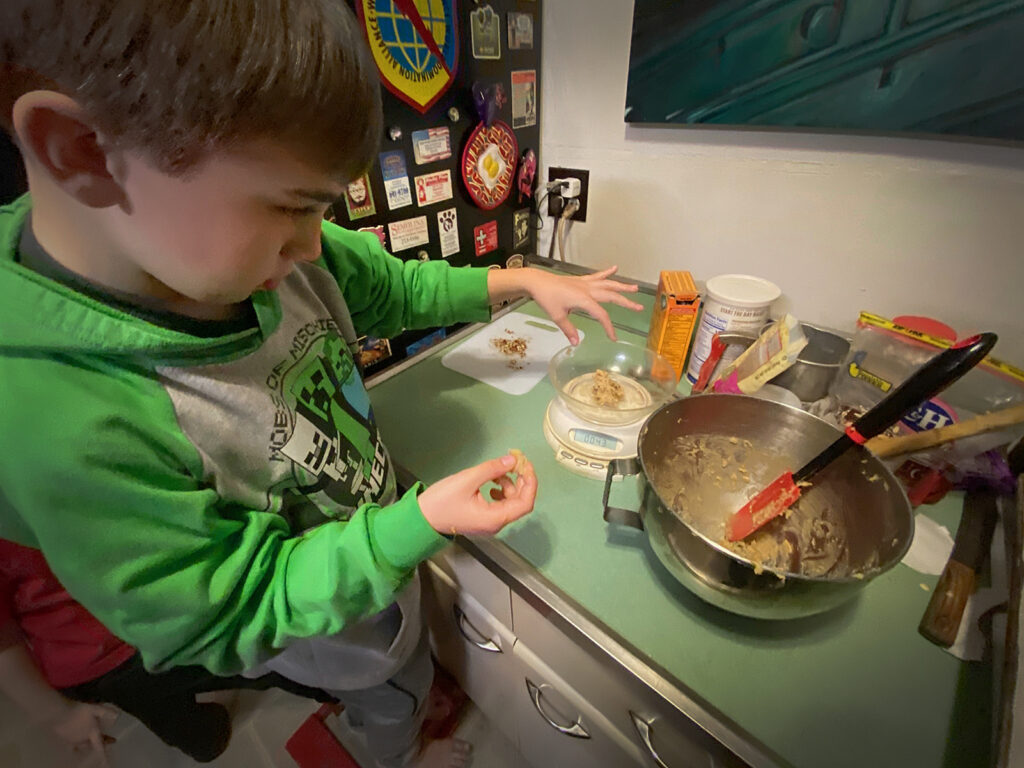
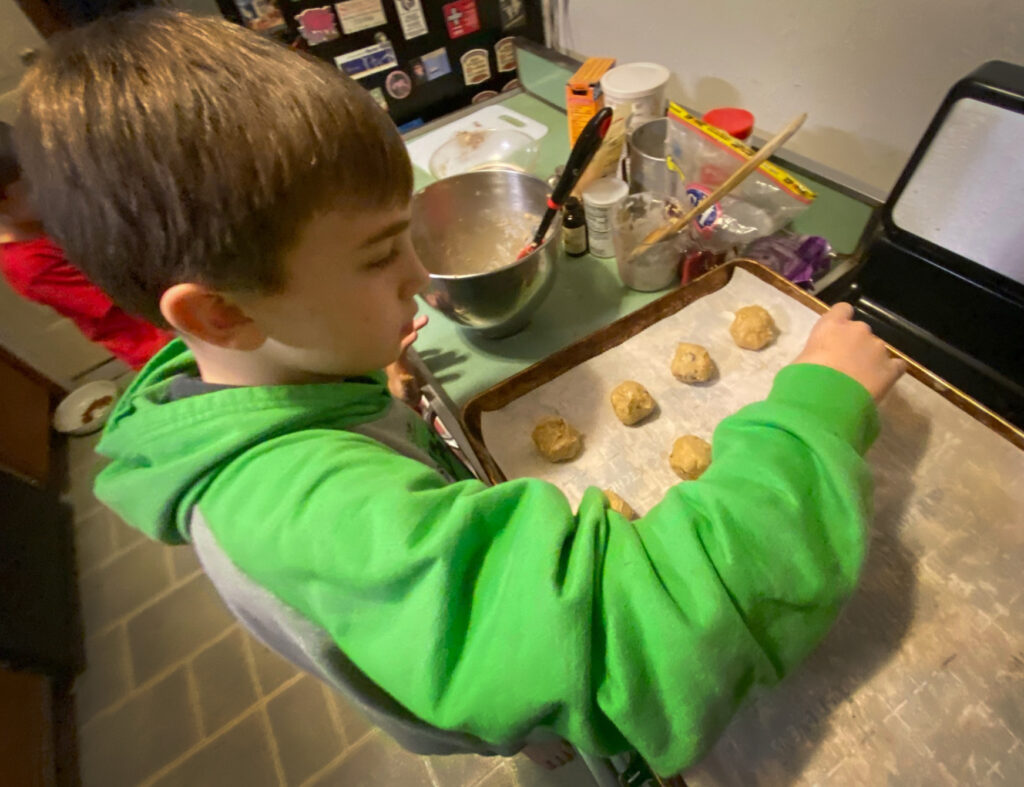
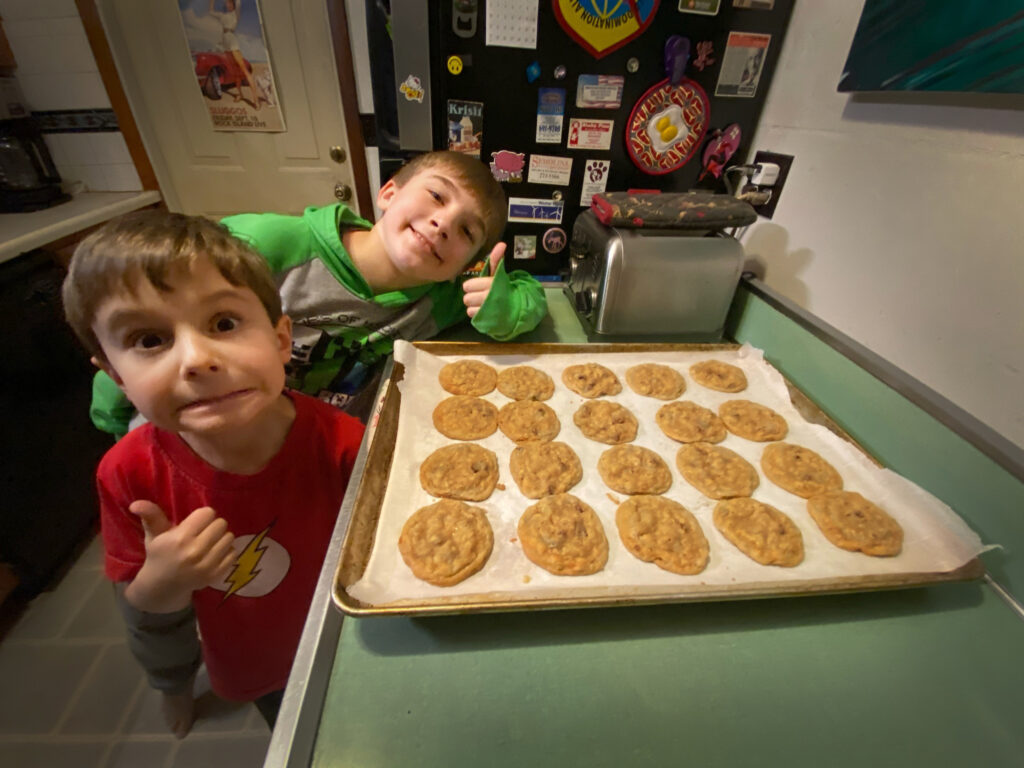
Now please take note: My grandmother advised me that she felt the recipe as written called for too many rolled oats, so we backed that off from two cups to one. In retrospect, I feel we dialed it back a little too much, and in my final recipe below you will note that I have called for a cup and a half. Also her recipe did not explicitly call for pecans, but she always included them, so we did too. About a cup is a good ballpark, but you can of course adjust that to your liking, or omit them altogether.
For shortening she always used Butter Flavor Crisco, but we didn’t have any vegetable shortening, so we substituted half lard and half unsalted butter. Our cookies came out just a little bit flatter and more spread out than I would have liked, but part of that is due to having cut the oats, and part because we neglected to sufficiently chill the dough before rolling and baking. (My bad. Don’t skip this!) Oh, and Grandma Genny has never used parchment paper in her life, but I find it indispensable when making cookies. If you don’t use it, make sure to spray your cookie sheets with food release before putting the dough balls down.
It is noteworthy that other iterations of this cookie include coconut, cinnamon and sometimes other tree nuts or peanuts; it appears to be a kind of kitchen-sink recipe you can stuff full of goodies as you please. The Cowboy Cookie even had a big moment in the sun in the year 2000, when former First Lady Laura Bush famously whipped Tipper Gore in a head-to-head cookie battle in Family Circle magazine with her version of the recipe.
But for us, this is the Cowboy Cookie recipe of our people, passed down from a woman born in 1923 all the way to her great-grandchildren — and hopefully, years from now, generations beyond.
COWBOY COOKIES RECIPE
Ingredients:
2 cups flour
1 teaspoon baking soda
1/2 teaspoon baking powder
1/2 teaspoon salt
1 cup shortening
1 cup granulated sugar
1 cup brown sugar, packed
2 eggs
1-1/2 cups rolled oats
1 teaspoon vanilla extract
1/2 bag (about 6 oz) chocolate chips (milk or semisweet)
1 cup pecans, chopped
Preparation:
1. Sift together flour, baking soda, baking powder and salt. Set aside.
2. In a mixing bowl blend together shortening, sugar and eggs, then beat until fluffy. (An electric hand or stand mixer works best if you have one.)
3. Slowly stir in flour mixture, then oats, vanilla, chocolate chips and pecans. Mix until uniform.
4. Cover the dough with plastic wrap or a towel and place in the refrigerator for an hour or two, until it is thoroughly chilled.
5. Preheat your oven to 350° F. Roll dough into balls about the size of a golf ball and place on a cookie sheet covered in parchment paper (if you have any; if not, spray the cookie sheet first with food release to prevent sticking). Try to make the dough balls uniform and leave enough space between them so that they don’t spread together as they bake.
6. Bake for about ten minutes, until just starting to brown; they are better if a little underbaked than overbaked.
7. Remove from oven, let cool on the cookie sheet, then store in an airtight container. This recipe will make roughly three dozen cookies.
For a follow-up to this story, including a version of the recipe in international measures, check out Cowboy Cookies International.

